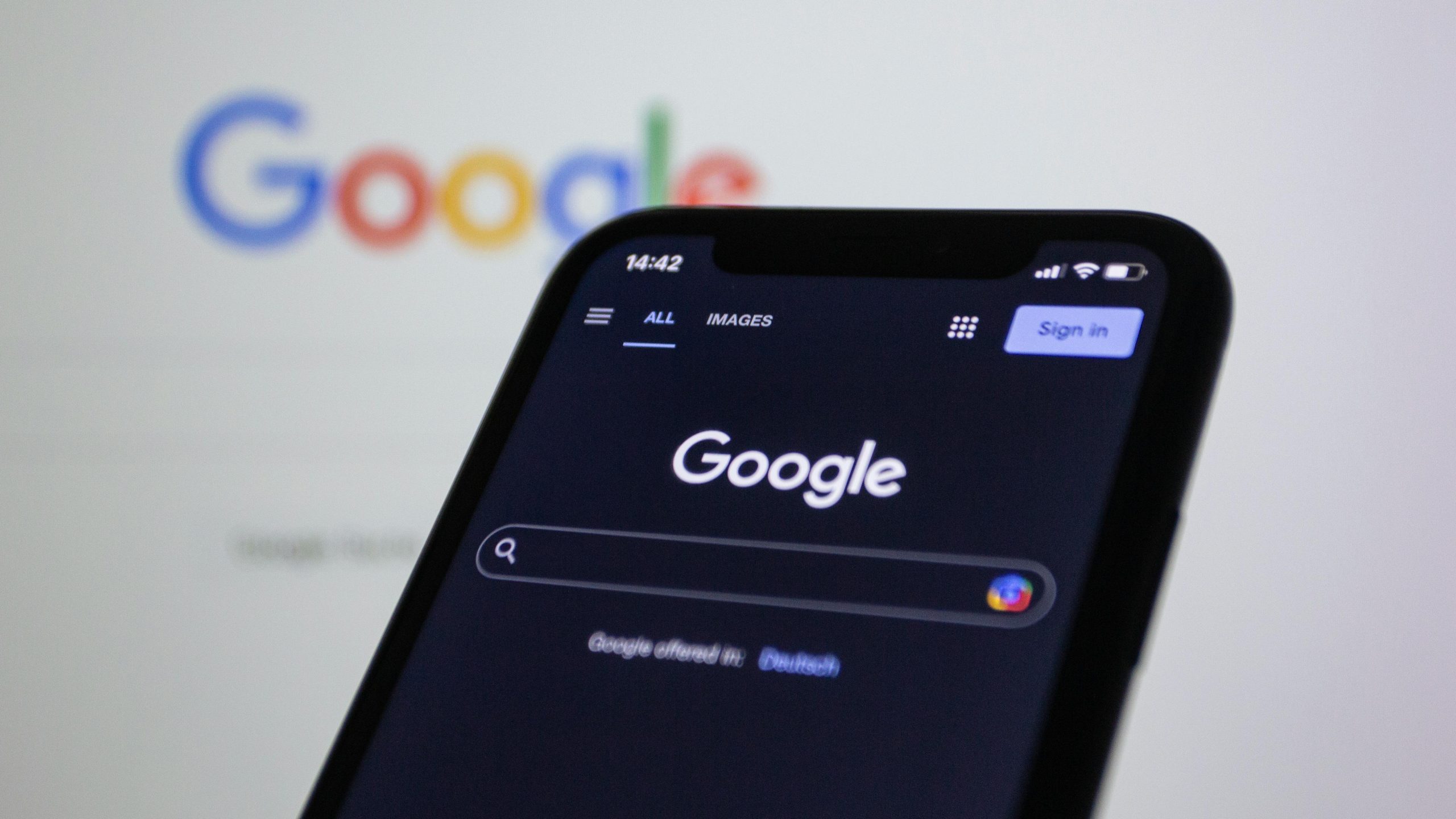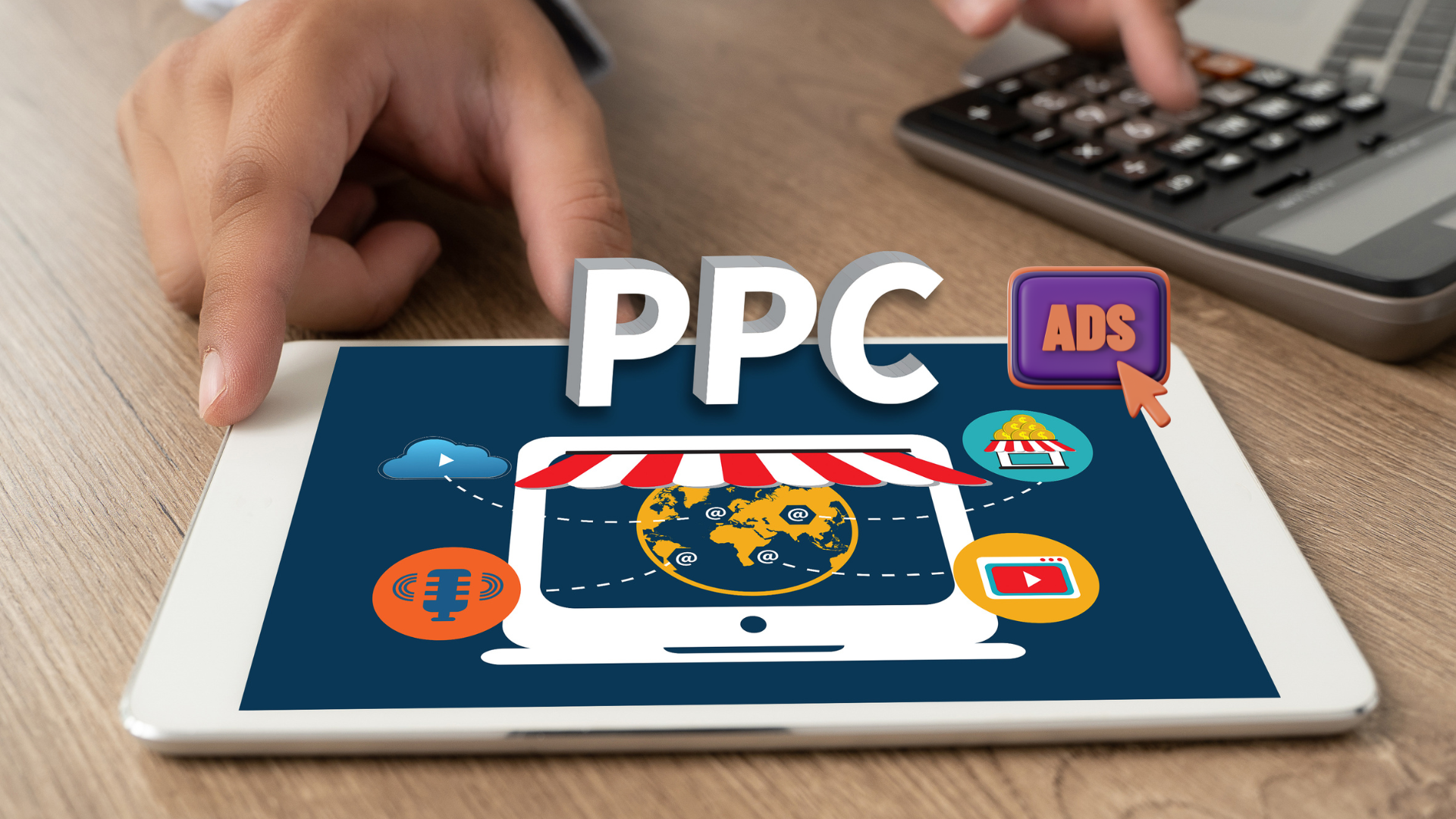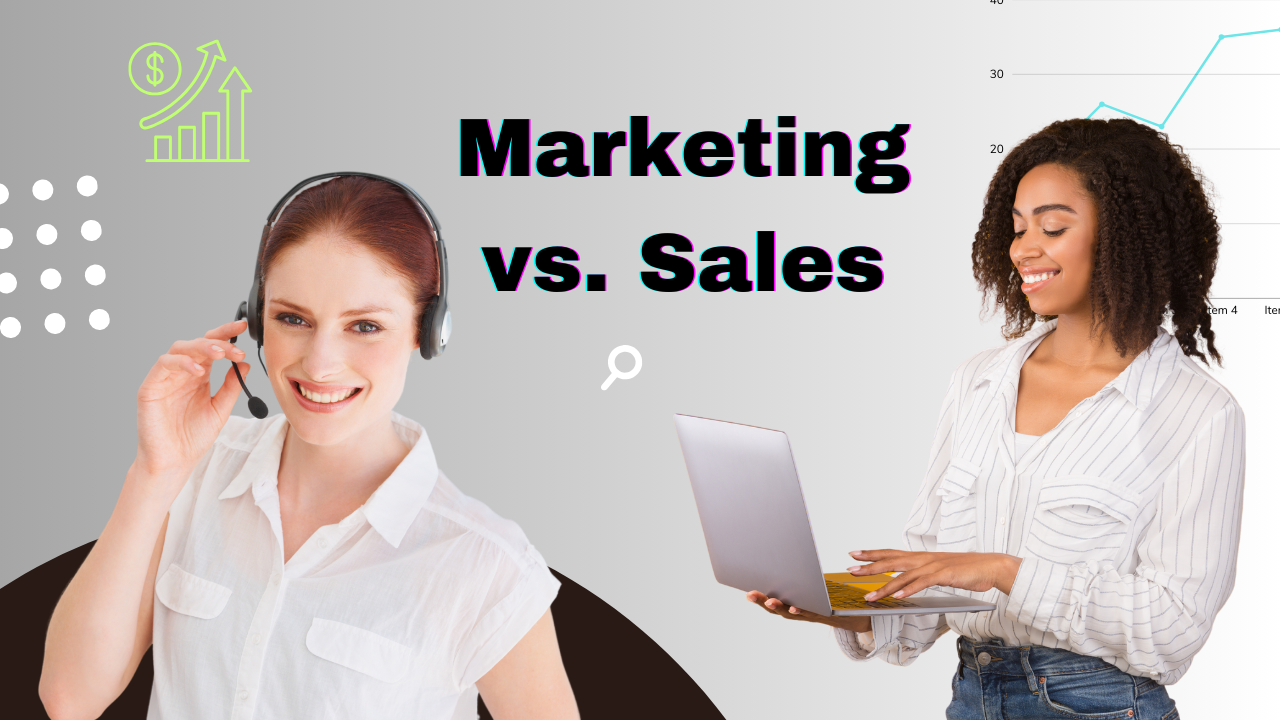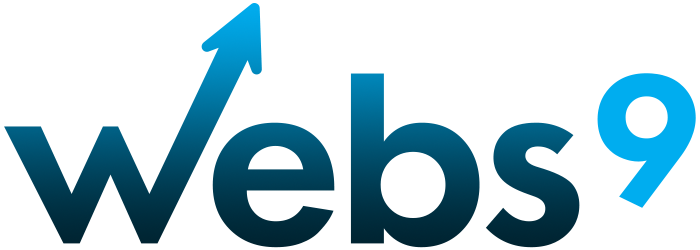Table of Contents
Paid advertising on social media has become one of the most effective digital marketing strategies for businesses to get relevant leads. Of all the channels, Facebook is proving to be the most effective advertising channel to get more impressions, clicks, and conversions in a short time.
Facebook advertising is an important way to connect with your audiences on the world’s largest social network.
It’s essential to understand the different Facebook ad types and targeting options before you dive in if you want to get great results.
In this article, we’ll walk you through everything you need to know on how to advertise on Facebook if you are new to this channel, from planning your first ad to developing advanced Facebook campaign strategies.
Reasons to Use Facebook Advertising
With their machine-learning algorithm, Facebook figures out how people interact with your content and will, therefore, reward engaging content by showing it more to people who show interest in it.
- Facebook has over 3 million businesses advertising on their platform and the number is constantly rising.
- Facebook has over 1.13 billion active daily users, mostly on mobile devices
- Most people spend an average of 50 minutes, each day scrolling on Facebook, Instagram and Messenger
- As Facebook’s organic reach has declined in the last years, due to the constant changes in algorithm, businesses find it more difficult to reach and engage their audiences with organic (non-paid) content.
- Unlike organic reach, Facebook advertising benefits you by showing your content to those who have not liked your page but have similar demographics, characteristics, and interests to your current fans.
Facebook Targeting Options
The Facebook targeting options are multiple, allowing a number of combinations, being as broad or as specific as you want. This is one of the most important benefits of Facebook ads. You can basically target people based on anything – even aspects you’d never think at:
- Basic info such as age, location, gender, job title, etc.
- The device they’re using and their internet connection speed
- Other Facebook ads they click on
- People’s income level
- Past website visitors, app users
- People who interacted with your Facebook page or one of your Facebook events
- People whose birthdays or anniversaries are fast approaching
- And a number of other specific factors, depending on your goal and business type.
Many people who start advertising on Facebook will ask, “How much should I spend?” One of the benefits of Facebook Ads is that you can advertise on any budget and achieve your goals.
Pros and Cons of Facebook Advertising
Pros
- Multiple targeting options like age, income, towns, regions, age, etc. allowing a granular
- The possibility to target people who are at an early buying stage as well as later stages
- CPC is relatively cheaper compared to other advertising platforms
- The use of images and videos to grab the audience’s attention to sell more products or services
Cons
- Not so easy to track the campaigns’ results compared to Google Ads
- Advertising on Facebook can be quite expensive if set up and managed in a wrong way
- Target audiences can be difficult to identify first-hand
- The lack of the option to target ads during certain times within the day unless you choose a lifetime budget
- It’s more suited for B2C than for B2B
Implement the Facebook Pixel
Before you start figuring out how to advertise on Facebook, you’ll have to set up the Facebook Pixel.
The Facebook pixel is code that you place on your website. It collects data that helps you track conversions from Facebook ads, optimize ads, build targeted audiences for future ads, and remarket to people who have already taken some kind of action on your website.
It works by placing and triggering cookies to track users as they interact with your website and your Facebook ads.
The Facebook pixel provides important information you can use to create better Facebook ads, and better targeting options for them. Facebook tracking pixel data helps ensure your ads are seen by the people who are most likely to take your desired action.
Setting up a Facebook pixel helps you identify people who are more likely to convert, the actions they’ve taken on your website after visiting your ad, and the ads that are working well. By doing this, you get to lower your Facebook ad costs.
Here’s how to implement the Facebook Pixel in 7 easy steps:
- Create your pixel: From your Facebook Events Manager, click the hamburger icon in the top left and choose Pixels.
- Click the green Create a Pixel button.
- Name your pixel, enter your website URL, and click Create.
- Add the pixel code to your website. To put the pixel to work gathering information on your website, you now need to install some code on your web pages. There are a few ways to do this depending on what website platform you use.
- Check whether you’ve installed the code correctly by entering your website URL and clicking Send Test Traffic. Once your Facebook pixel is tracking activity, click Continue.
- Track the right events for your business – Select which of the 17 standard events you’d like to track using the toggle buttons. You can also set parameters for some events.
- Before you start relying on the data from your Facebook pixel, you should confirm that it’s also tracking properly. Add the Facebook Pixel Helper extension to your Google Chrome browser. (It’s only available for Chrome, so if you use a different browser, you’ll need to install Chrome to use the Pixel Helper.)
Facebook Ad Types
There are different types of Facebook ads, giving advertisers many options to choose from when creating a campaign.
- Boost posts
- Promote page
- Drive traffic to the website
- Get conversions on the website
- Get app installs
- Boost app engagement
- Reach local audience
- Increase event attendance
- Motivate people to claim an offer
- Get more video views
- Get more leads for your business
Image Ads
This is the simplest way to start advertising on Facebook. You can create an ad with one image or more (carousel) and using the right headline and description, with the right CTA and served to the right people can get you relevant conversions.
Even if image ads are pretty straightforward that doesn’t mean they should be boring and you shouldn’t invest more time in a creative approach and content.
Carousel Ads
A carousel ad uses up to 10 images or videos to showcase your product or service.
You can use this ads’ format to highlight different benefits of your product or service, a number of different products, or even use all the photos together to create one large panorama image.
Video Ads
Video ads are being used more frequently in the last period of time, video-content is the most converting one on all advertising platforms, because it serves the message in a compelling and creative manner, being more prone to convince people to take the desired action.
Video ads can run in the News Feed, Facebook or Instagram Stories, or they can be shown as in-stream ads in longer Facebook videos.
You can also create video ads from multiple images or animations, to capture the attention of your target-market more easily.
Slideshow Ads
Slideshow ads have eye-catching motion, just like video ads, but use five times less bandwidth, so they load well even for people on slow internet connections. They’re an easy, low-impact way to draw attention.
Collection ads
These Facebook paid ads, which are offered only for mobile devices, allow you to showcase five products that customers can click to buy.
Collection ads pair with Instant Experiences to allow people to buy your products without ever leaving Facebook.
This makes online shopping easy when people are on-the-go and may not have a great internet connection.
Instant Experience ads
Instant Experiences were called Canvas Ads in the past. They’re a full-screen ad format that loads 15 times faster than a mobile website outside of Facebook.
They can also be linked to additional Instant Experiences so people have access to even more instant mobile content.
Lead ads
Lead ads are only available for mobile devices because they’re specifically designed to make it easy for people to give you their contact info without a lot of typing.
They’re great for collecting newsletter subscriptions, signing someone up for a trial of your product, or otherwise allowing people to ask for more information from you.
Dynamic ads
Dynamic ads allow you to promote targeted products to the customers most likely to be interested in them.
They work best when used if someone has visited a product page or placed a product in their shopping cart on your website, but then abandoned the purchase. Dynamic ads for that precise product will appear in their Facebook feed.
Messenger ads
Facebook Messenger ads give you access to the 1.3 billion people who use Messenger every month. When creating your ad, simply choose Messenger as the desired placement. You also need to select Facebook feed. It’s as simple as that!
Stories ads
Stories ads are a full-screen vertical video format that allow you to maximize screen real estate without expecting viewers to turn the screen. These ads have proven highly effective. A Facebook-commissioned Ipsos survey showed that more than half of people said they were making more online purchases because of Stories ads.
Setting Up Your Facebook Budget
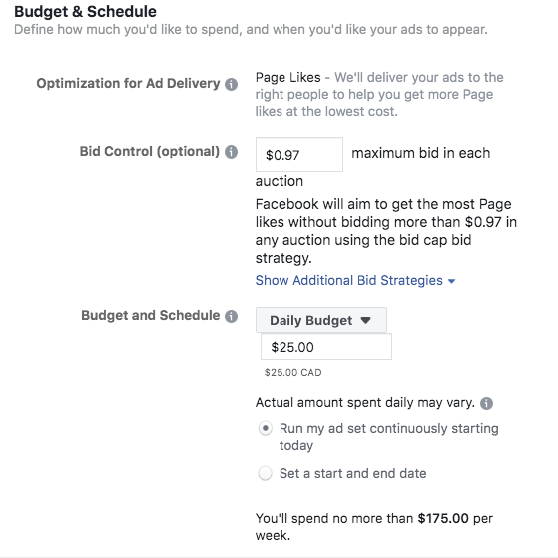
Deciding how much money you want to invest in your Facebook Campaigns isn’t an easy task and it begins with a proper structure of your campaigns, ad-sets and ads. You can choose a daily budget or a lifetime budget.
You can also add additional bid controls, which help cap the amount of money per desired action. Using the advanced budget options you can go into even more details on how you want Facebook to spend your money.
Facebook Audiences
Getting started with Facebook Ads means taking a closer look at the target audiences of your business and deciding on what to start with.
If you’re new to Facebook Ads, the general recommendation is to start with 2 targeting options: Cold traffic campaigns and Remarketing campaigns.
Start by selecting your target location, age, gender, and language. As you make your choices, keep an eye on the audience size indicator on the right of the screen, which gives you a sense of your potential ad reach.
You’ll also see an estimated number of Page likes. It’s good to know that this section will be more accurate if you have run campaigns before, since Facebook will have more data to work with. Always keep in mind that these are only estimates.
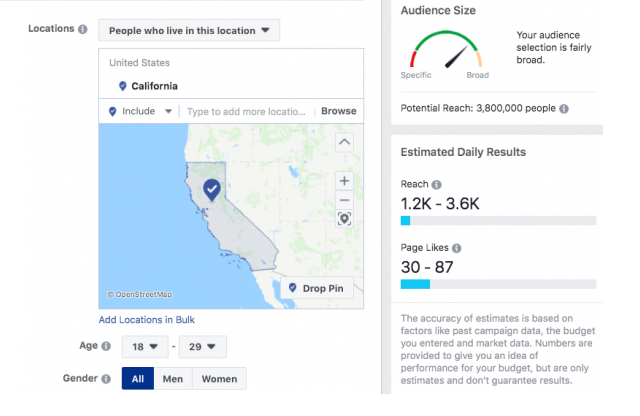
For a more granular understanding of Facebook remarketing options, you should get friendly with Custom Audiences. Custom Audiences allow you to target five different user segments: customer file, website traffic, app activity, offline activity, and engagement.
PRO-TIP: Target people similar to existing customers with Lookalike Audiences
This allows you to find audiences with similar traits as people who already converted. Facebook’s tools are actually much more sophisticated in their audience matching.
Using Lookalike Audiences you don’t even have to know what data points you’re trying to match because Facebook will figure that out for you.
Like Custom Audiences, Lookalike Audiences are best used together with more layered targeting. Adding this to lookalike audiences is an effective way to control audience size, if you’re worried your lookalike is unqualified, or too large for your budget.
Facebook Ad Placements
If this is the first time you use Facebook advertising, the simplest choice is to use Automatic Placements.
When you select this option, Facebook will automatically place your ads across Facebook, Instagram, Messenger, and the Audience Network when they are likely to get the best results.
After this, using The Reports sections in your Facebook Ads Manager you can make informed choices about the most converting placements to choose for your next campaigns.
Take a Look at Your Competitors
While Facebook doesn’t explicitly allow you to target fans of your competitors’ pages, you can target prospects based on their “interests.”
Interests are based on the things someone explicitly likes and closely related subject matter.
This means that if your competitors or their customers are active on Facebook, you can use stated brand affiliation or fandom to create brand recognition and, eventually, sales.
You can play with the detailed targeting option to search for brand names and find the right way to target your competitors’ interests.
Facebook advertising is a really helpful tool and you should take time to investigate each action you take so as to make better optimization decisions and get more conversions.
Facebook Advertising is not rocket science and if you do it the right way for your business you can get pretty nice results.
And if you’re new to Facebook Ads and need some support, our team of experienced marketers are just one click away!


